From The Book: The Catalyst of Power – The Assemblage Point of Man by Jon Whale
Locating and experiencing our Assemblage Point gives us personal proof that in addition to our physical body, we all have an energy body. Working with the energy body is not a trivial affair. The Assemblage Point, in particular is particularly personal, directly connected to the “life force” of the individual. The Assemblage Point is not part of the physical body. Although it has serious beneficial medical applications, like the acupuncture meridians, chakras and nadis, it is an integral component, the epicentre of the energy body that saturates the physical body.
The Assemblage Point is a cluster of strong energy lines or strings. Close to the body they have an average diameter of about 1.0 centimetre or less. These lines pass through the chest and out of the back not unlike the Earth’s magnetic north and south pole. There is an energy “potential” both along the length of the lines and across their diameter. The energy potential is strongest close to the body where the lines are concentrated. Further away from the body the energy lines diverge or spread out and the energy potential spreads with them. Where the cluster of lines enter the physical body, they induce a tender or very sensitive area of skin when pressed or touched. This area has only a diameter of about 0.5 to 1.0 centimetres. This tenderness can be quite uncomfortable and can penetrate through to the back.
Where to Look for the Assemblage Point
The location of a woman’s Assemblage Point is generally, but not always, several centimetres higher than that of a man (Figure 4.2.). Broadly speaking, a woman’s vibrational rate, her behaviour, the way she feels and her view of the world are quite different to a man’s. Therefore, female and male locations tend to be different. Finding the precise location and entry angle of the average, healthy, balanced person is a very quick and simple affair.
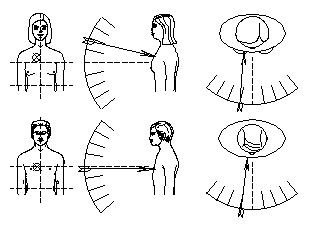
Figure 1. Average assemblage point location for male and female.
Patients with a bright and energetic disposition (a high vibrational rate) will have a high location and elevated entry angle. Depressed and lethargic patients, such as those suffering from M.E., post-natal or clinical depression, chronic fatigue will have a low location and descending entry angle. Finding the location and entry angle for patients with mental or physical health problems can be difficult in the beginning, but gets easier as one gains experience. Often their symptoms, posture, and tone of voice will suggest where to look. The “off centre” map (figure 4.3) gives a general overview of locations for specific physical and psychological symptoms. There are, however, rare exceptions to these.
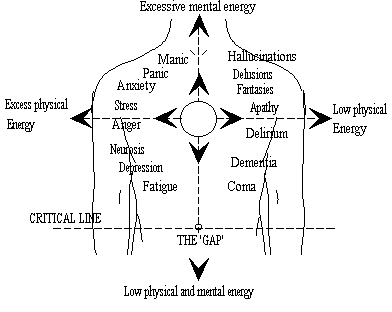
Figure 2. The ‘off centre’ map showing approximate locations for various symptoms.
Feeling The Location Of The Assemblage Point
The following is just one example of the numerous methods used to locate the Assemblage Point:
1. The person should stand upright, looking ahead at the horizon. Also footwear should be removed, as well as any made fabric shirts, pullovers, etc. Natural fibre clothing is usually OK as it is normally free from static electricity. The investigator/practitioner should stand facing the person’s right-hand body side.
2. Form your left hand into a shallow cup shape. Use it to “feel” for the person’s Assemblage Point at the back around the area between the shoulder blades. 3. Form the fingers and thumb of your right hand into a tight, concentrated point, like a “bird’s beak”. Use the finger tips of the right hand to “feel” for the cluster of energy lines entering the person’s chest.
4. Hold both of your arms wide apart. Hold your left hand behind the person and your right hand in front. Standing relaxed, be keenly aware of your physical feelings and your weight on the floor. It helps to close your eyes or look away. Moving both hands in a slow circular motion, slowly bring your hands towards the back and the chest, feeling for the maximum energy disturbance or potential in the finger tips of your right hand and in the palm of your left hand. Allow the person’s energy lines to control your arm muscles.
5. The difference in energy potential along the collection of energy lines of the Assemblage Point is easy to distinguish, being concentrated and stronger close to the chests. When your cupped left hand and right hand pointed fingers are lined up with the person’s cluster of energy lines, you will experience an “energy surge”. This will pass along your arms and through your chest between your shoulders.
6. Bring your hands together, feeling for the maximum power and connection with the person. Allow your hands to touch the person’s back and chest at the points of maximum energy connection.
7. Move your right-hand fingers back and forth across the energy lines of the Assemblage Point. Most subjects will feel a “pulling” sensation deep inside their chest. Use small, adhesive labels to mark the front and rear position.
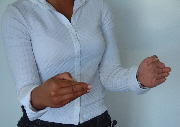
Figure 3. How to form your fingers and hands
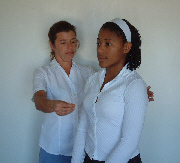
Figure 4. Feeling for the Location
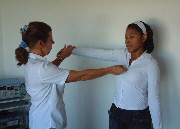
Figure 5. Muscle reflex locating
Confirming the Location
At the location of the Assemblage Point, the skin is less resilient and more painful to the touch. The skin may occasionally be blemished or marked in some way, sometimes by a small reddish spot. Touching or pushing the spot with a finger tip will cause the skin to redden more than skin elsewhere on the chest. The spot is tender, sore or uncomfortable. Pushing it causes the person a feeling of slight unease. The feeling passes deep into the chest, often right through to the shoulder blade or the place of exit at the rear. Any sensitive person touching the precise location of a person’s Assemblage point will feel an exchange of energy. It will feel like a faint or weak electric shock and often has a vibrating quality to it.
For comprehensive information and instructions on locating and correcting the location and entry angle of the Assemblage Point, please refer to Ebooks and paperbacks entitled: 1) ‘The Catalyst Of Power – Assemblage Point of Man’ 2) ‘Naked Spirit – The Supernatural Odyssey’
How To Locate Your Own Assemblage Point
1.1) Provided that one is in good health and given a little time and some personal perseverance, it is relatively easy to locate one’s own Assemblage Point.
1.2) Use a peaceful warm environment. Refer to the map for the average location for males and females on Figure 1. Above.
1.3) Using the tip of your index finger of your left hand. Press moderately firmly into the tissue of the right side your chest in the average location for male and females as shown on the map above.
1.4) Remove your finger and press firmly again in a very-close adjacent spot. Repeat this until you have covered a diameter of perhaps 10 centimetres (4 inches).
1.5) When you find your location it will be very tender, even sore or painful. With most individuals, the sensation will pass deep into the chest, perhaps through to the back.
Ladies Please note that you Assemblage Point cannot be located by pressing on your breast tissue (mammary gland). The reason is that breast tissue moves around depending on posture. Depending on your bust size, for large sizes you may have to lay on your right side so that your right breast moves over out of the way. The key factor is that the Assemblage Point can only by located by pressing through the chest tissue onto the rib cage itself. Alternatively, you can use your right hand to move your breast to one side and then use your left-hand index finger to do the probing.
Here is an email message from a lady in the USA: – >>>Hi Jon. I Successfully located the entrance of my assemblage point on my first attempt. It alerted me with a jolt of electrical charge that passed into my body… I asked you to be aware of this, that I had found it… Thank you.<<<
Once you indisputably know and are familiar with the location and entry angle of your own Assemblage Point then you will be in a good position to adopt the necessary skills to find the Assemblage Point location and entry angle of other people.
When you have located your Assemblage Point.
2.1) Using the above strategy, then you can apply pressure on the tender point and change the angle of you finger to estimate the front entry/rear exit angle of the energy line of your Assemblage Point. Here, it is better to use the straightened index or second finger of your right hand. When you perceive your entry angle correct, then you may well feel the energy line passing through your chest to a point on your back. If so, then you will know your rear exit location.
2.2) If you have an anxious nervous disposition or experience (hypertension) then the location and entry angle will be higher than average. (See Figure 6.)
2.3) If you have a steadfast character then the location will be closer to the vertical centre chest line but slightly on th right side. The entry angle will not be deviated but straight (dead ahead). (See Figure 7.)
2.4) If you are generally down in mood or experience depression (hypotension) then the location and entry angle will be lower. (See Figure 8.)
Points to Bear in Mind
3.1) If you are on the large side, you must press harder to penetrate through the subcutaneous tissue to the rib cage.
3.2) If you are female and have a disposition as outlined in 2.2 or 2.3 above, then your Assemblage Point may well be in your breast. Your cup size and age will determine how hard you have to press. In any event you will not feel the tender point on the surface of your breast. You must press into your breast deep to the rib cage.
Benefits of Knowing the Location and Entry Angle of Your Assemblage Point
4.1) When you know the location of your Assemblage Point, you will be able to check it and compare it against your state of physical and emotional health. For example should you experience intimidation and get angry, then the location and entry angle will move towards the right. It may take you several days to recover your normal composure and the Assemblage Point to return to its normal location for you. If you experience a trauma, lets say bereavement for example, then your Assemblage Point location and entry angle will be in a lower position than normal. Depending on your personality type, it will determine how quickly you and your Assemblage Point recovers to your normality.
4.2) When you know and are familiar with your own Assemblage Point, the easier it will become for you to locate and diagnose the Assemblage Point of other. If you are not totally familiar with you own Assemblage Point, you will not be able to locate and correct the alignment of other people.

Figure 6.
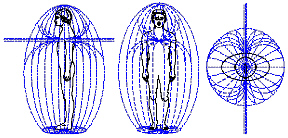
Figure 7.

Figure 8.